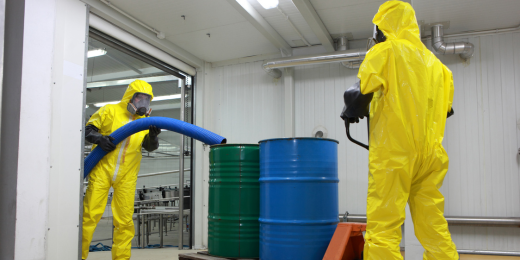The 2-Minute Rule for Reclaim Waste
The 2-Minute Rule for Reclaim Waste
Blog Article
The Basic Principles Of Reclaim Waste
Table of Contents8 Easy Facts About Reclaim Waste ExplainedHow Reclaim Waste can Save You Time, Stress, and Money.Examine This Report about Reclaim WasteFascination About Reclaim WasteReclaim Waste Can Be Fun For Everyone
Domestic sewage waste refers to the waste and items from a domestic septic tank. The proper administration and disposal of domestic sewage waste require fluid waste to be transferred to a sewer treatment plant where the proper approaches and tools are applied to cleanse and dispose of waste.
Commercial waste usually consists of potential risks, such as flammable materials or a blend of fluid and solid waste products, and needs an advanced and in-depth disposal process. The disposal of industrial waste normally involves the filtering of waste before transport to make sure secure and appropriate disposal. Hazardous waste is developed from results and drainage of industrial processes and production.
This kind of waste can not use the very same sewer management transportation or procedures as septic or business fluids. The industrial waste monitoring procedure requires the examination and screening of fluid waste before it undertakes the disposal process (liquid waste removal). Runoff waste is the fluid waste that originates from overflow and excess stormwater in highly inhabited areas or cities
Drainage waste can cause contamination and flooding if not handled properly. Ensuring proper waste monitoring can stop catastrophes and reduce ecological damage.
The Facts About Reclaim Waste Revealed
Get in touch with PROS Services today to learn more about our waste monitoring and disposal solutions and the appropriate methods to look after the liquid waste you produce.
(https://gravatar.com/maximum5d830db060)Do you know what occurs to your water when you draw the plug, purge the bathroom or drain pipes the washing equipment? No? Well, it's worth recognizing. This so-called 'wastewater' is not just an essential resource yet, after treatment, will certainly be released to our land, waterways or the sea. Utilized water from bathrooms, showers, baths, cooking area sinks, washings and industrial procedures is referred to as wastewater.

water used to cool down machinery or clean plant and devices). Stormwater, a kind of wastewater, is drainage that streams from farming and urban areas such as roof coverings, parks, gardens, Extra resources roads, paths and rain gutters right into stormwater drains, after rain. Stormwater moves neglected straight to neighborhood creeks or rivers, ultimately getting to the ocean.
Little Known Questions About Reclaim Waste.
In Queensland, the majority of wastewater is treated at sewer treatment plants. Wastewater is moved from domestic or commercial websites with a system of sewage systems and pump stations, referred to as sewage reticulation, to a sewage treatment plant. Local federal governments construct, maintain and run most sewage therapy plants. Operators are certified under the Environmental Management Act 1994 to release treated wastewater at an appropriate environmental requirement right into waterways.
The Department of Natural Resources suggests neighborhood governments about managing, operating and keeping sewage systems and treatment plants. In unsewered areas, city governments may require householders to set up private or family sewage treatment systems to deal with domestic wastewater from toilets, cooking areas, shower rooms and laundries. The Division of Natural Resources authorises the use of home systems when they are proven to be effective.
In some brand-new subdivisions, treatment of some stormwater to get rid of litter, sand and gravel has actually started using gross pollutant catches. Wastewater therapy happens in four stages: Removes solid issue.
Utilizes tiny living microorganisms recognizes as micro-organisms to break down and get rid of continuing to be dissolved wastes and fine fragments. Micro-organisms and wastes are integrated in the sludge.
Getting The Reclaim Waste To Work
Nutrient removal is not offered at all sewage treatment plants since it calls for pricey specialist devices. Clear liquid effluent created after treatment might still include disease-causing micro-organisms - liquid waste disposal.

This typically means wastewater has to be treated or pollutants removed prior to it can be discharged to rivers. The majority of wastewater streams into the sewage system. Under the Act, neighborhood governments provide approvals and permits for eco pertinent activities (ERAs) involving wastewater launches that could have a local impact. The division provides approvals and permits to Ages including wastewater releases that could have a regional or statewide influence.
Some Known Questions About Reclaim Waste.
Or else, examples are considered laboratory analysis. Frequently several tests are required to develop the degrees of each of the various contaminants such as oils, hefty metals and chemicals in water. Monitoring supplies factual details regarding water high quality and can confirm that permit conditions are being satisfied. The details acquired with tracking supplies the basis for making water quality choices.
Report this page